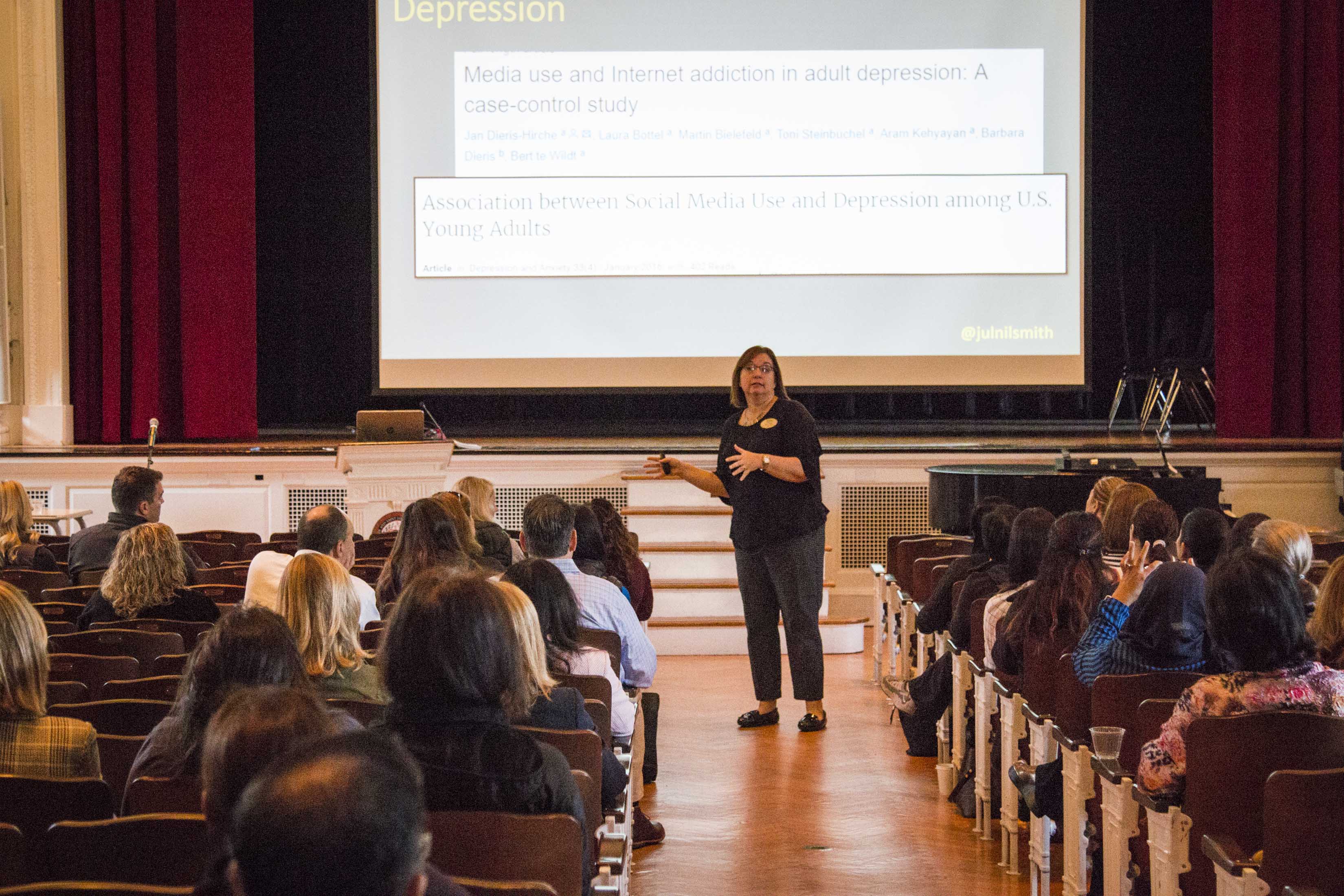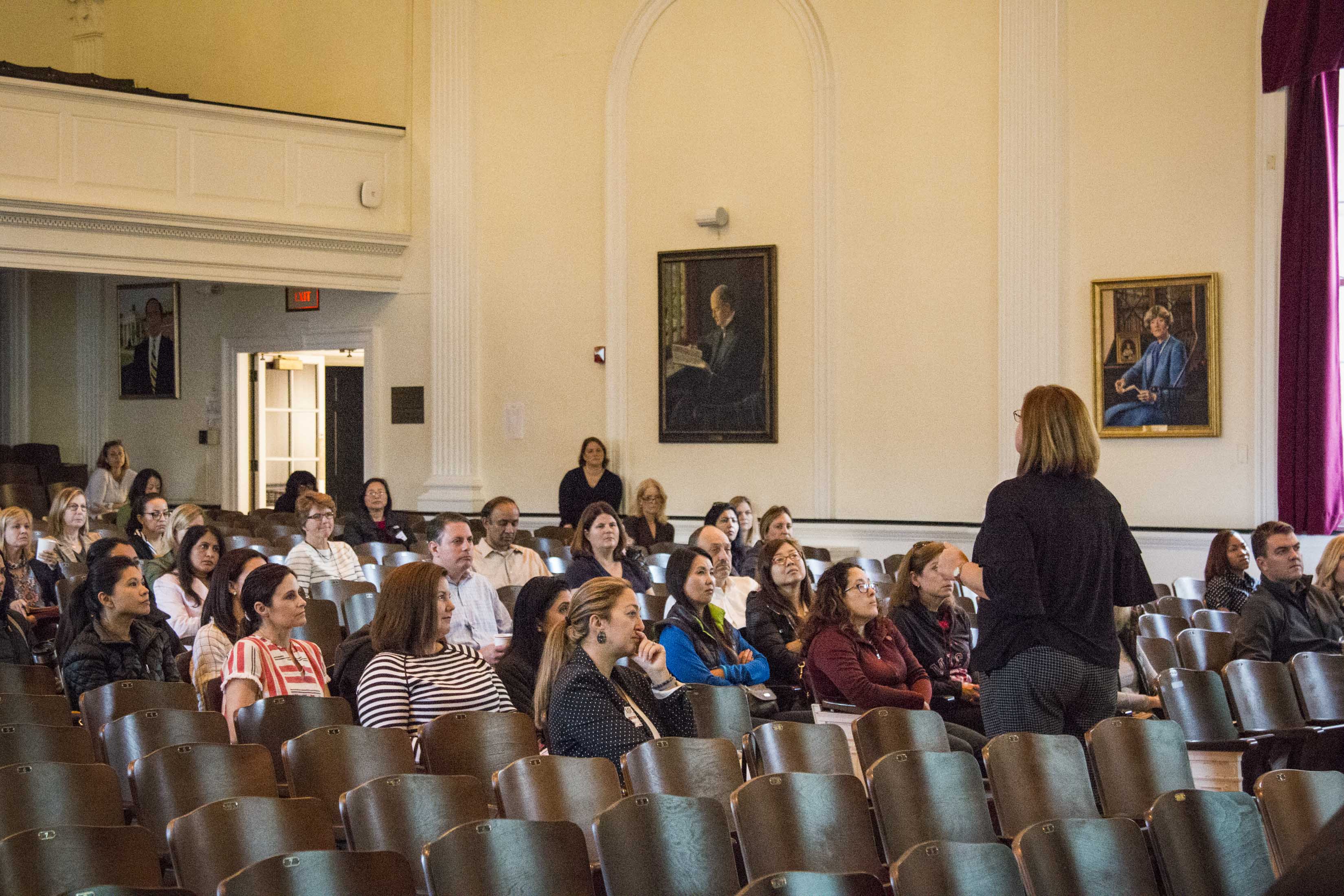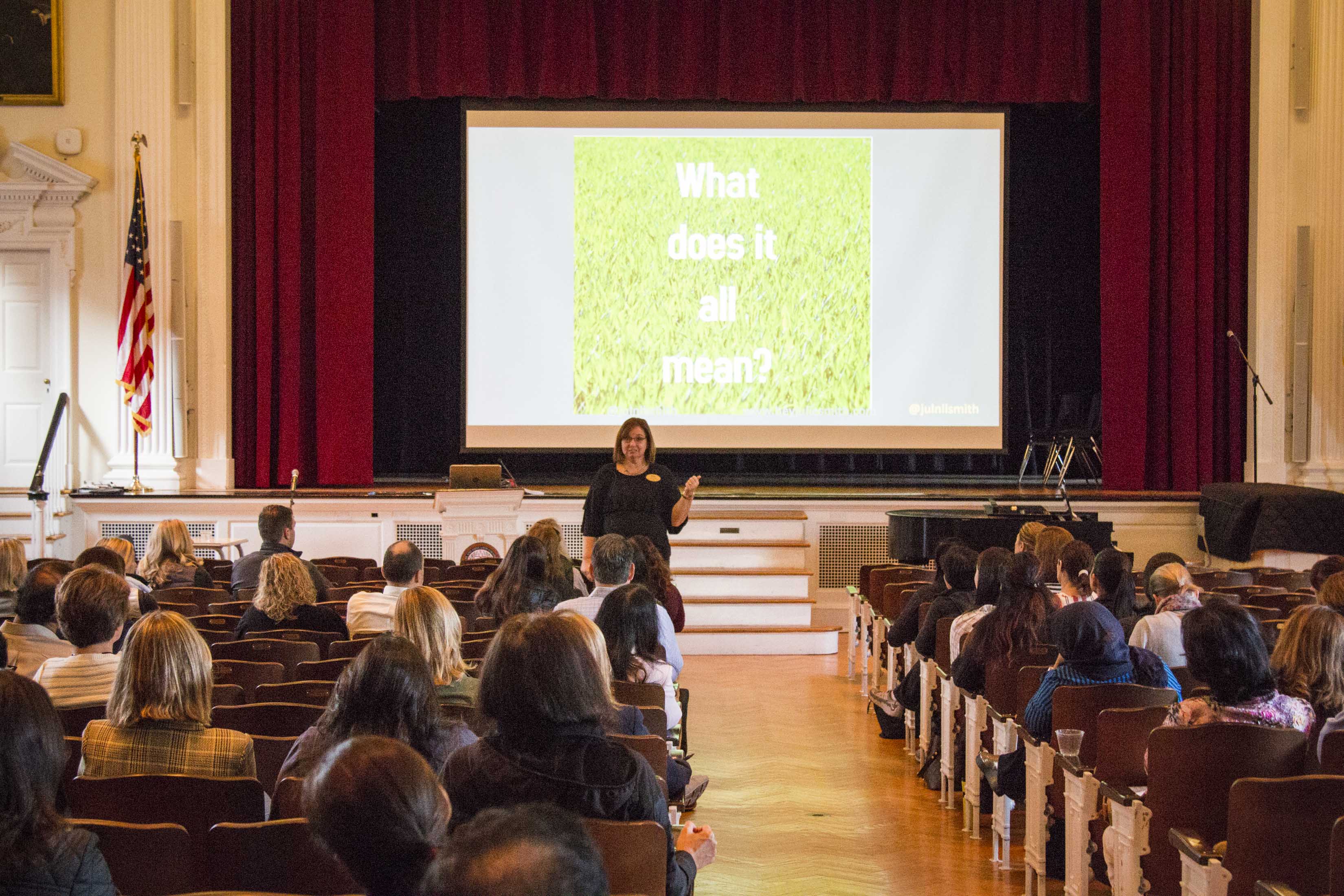The Parent Education Committee and Student Services team hosted an expert speaker this past Tuesday on „The Digital World in which Your Kids are Living“. Published author and Webster University professor Julie Smith explained the ins and outs of today’s digital world in a fun, fast talk focused on how to engage your kids in conversation about their digital experiences. She is the author of “Master the Media: How Teaching Media Literacy Can Save Our Plugged-In World“, and she has traveled all over the world helping teachers and parents with media literacy, digital citizenship, classroom engagement and social media.
Julie shared so many great pieces of advice, mainly geared towards parents of Middle and Upper School students – below is just a sampling.
- Ask your child if the device is bringing joy or stress. If it’s bringing more stress than joy, it is time for a break.
- Forgive yourself for not knowing as much as your child in this space. Be open to learning from them.
- Social media is not all good or all bad. It’s a tool, however one that should be used cautiously.
- Be prepared for the potential reality that your child will see something inappropriate or upsetting. Talk with them about what to do if that happens.
- Lock down privacy settings as tightly as possible. This is especially important for minors due to potential criminal charges. A good rule of thumb is that nobody can look at your photos unless you know them personally.
- Be aware of social norms. Ask your child about the „unwritten rules“ of particular social media channels.
- Read the terms of service, ideally with your child.
- Know the definition of cyber bullying – repeated electronic harassment with intent to harm.
- Talk to your child about the risk of „compare and despair“. People tend to only post the highlights of their lives on social media; and that can leave young (and old) minds wondering „do I measure up?“ while scrolling.
- Distinguish between mainstream media and fake news outlets by watching for red flags, such as bad grammar, nonsensical photos, inauthentic accounts, etc.
- Be aware of „bots“ and fake accounts trying to engage on social media. Use Google reverse image search to see if the account is legitimate.
- Monitor the apps your child is downloading. There is an ever-changing landscape of potentially dangerous apps available, including those that allow for anonymous conversations (without being tied to an account name) and those that allow photos to be hidden on a phone.
- Encourage your child to always think before they post. Social media doesn’t allow for the full context. Consider if the post can be taken the wrong way.
- Monitor your child’s online presence, and encourage them to do the same. Set up Google alerts to monitor when your child’s name is published online. Use Google reverse image to check if images of your child are being used in ways they shouldn’t be.
- Encourage a positive online presence. For example, your child could develop a website to highlight their passions and show off their skills; follow role models on social media; and present a decent profile photo (one that’s taken by someone else, with good lighting).





